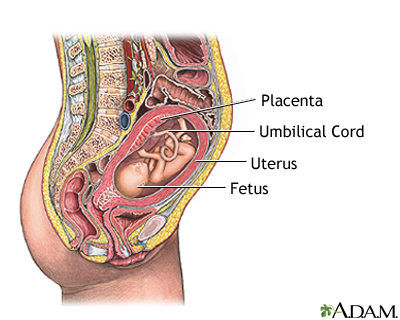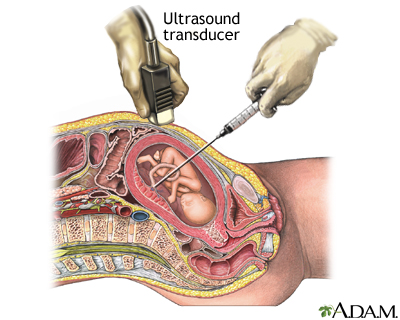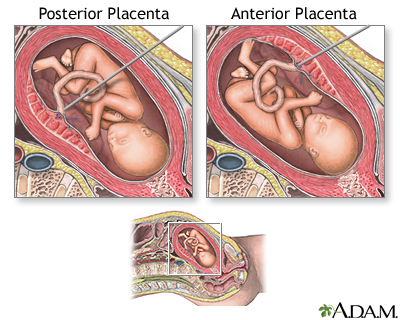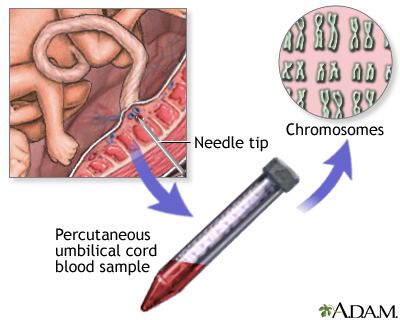

  |
 Percutaneous Umbilical Cord Blood Sampling - series |
Percutaneous umbilical cord blood sampling (PUBS) is a diagnostic procedure in which a doctor extracts a sample of fetal blood from the vein in the umbilical cord. This blood can be analyzed to detect chromosomal defects or other abnormalities. PUBS is also known as umbilical vein sampling, fetal blood sampling, and cordocentesis.
Your health care provider may suggest PUBS if ultrasound, amniocentesis, and chorionic villus sampling do not provide adequate information about your fetus' condition. PUBS produces rapid chromosome analysis. It also analyzes the fetal blood for certain infections and blood disorders.
The procedure is also used to perform blood transfusions to the fetus and to administer medication directly into the fetal blood supply.


PUBS is similar to amniocentesis, but instead of sampling the amniotic fluid that contains fetal cells, a specially trained doctor extracts fetal blood. She does this by inserting a fine needle through the woman's abdomen into the fetal vein in the umbilical cord. As with amniocentesis, the doctor uses ultrasound to guide the procedure. The entire procedure generally lasts 45 minutes to an hour.

Because the fetal vein in the umbilical cord is fragile in early pregnancy, doctors usually perform the test at 18 weeks gestation or later.
When PUBS is used for a chromosome analysis, also known as karyotype, the results are generally available much earlier than the karyotype results of an amniocentesis -- as soon as 48 hours after the procedure, compared to about two weeks after amniocentesis. This may be important if parents are trying to make a decision about whether to have an abortion and their fetus’s gestational age is close to the legal limit for abortion.

The miscarriage rate after PUBS is about 2%.
As with amniocentesis, there is a risk of infection, cramping, and bleeding.
Q: Is PUBS similar to fetoscopy? They often seem to be mentioned together.
A: That is because PUBS has largely replaced fetoscopy, an invasive procedure that used a small telescope-like instrument to view the fetus. The miscarriage rate after fetoscopy was between 5% and 10%, and the procedure is rarely used today.